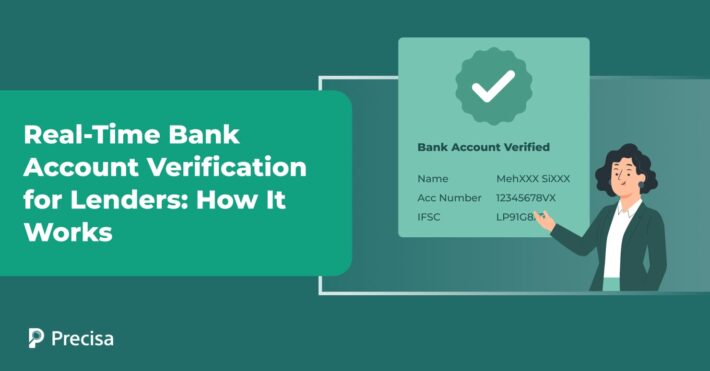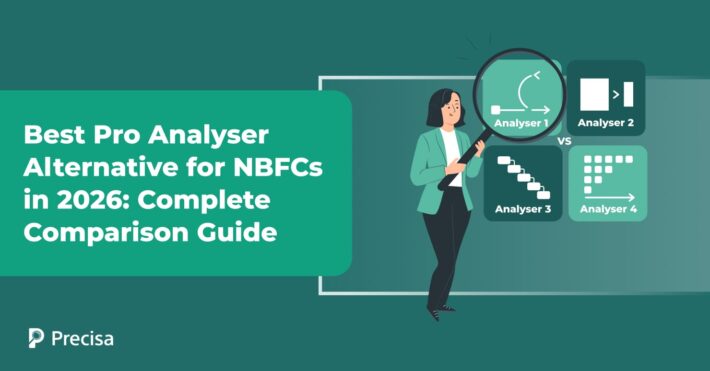Fraud or Not? RBI Urges Banks to Listen Before Labeling

Loan fraud is one of the top financial risks faced by lenders today. As of May 2024, it was revealed that the number of bank frauds has increased four times over the last five years. These cases predominantly comprise digital fraud.
Such incidents have caused major concerns across the industry. Some lenders have been triggered to prematurely classify defaulting borrowers as fraudulent, without conducting an audit.
This trend is detrimental to the future of lending culture and borrower trust. Recently, it has led the Reserve Bank of India (RBI) to issue fresh guidelines for banks on how to proceed when they suspect a case of potential fraud.
In this blog post, we deconstruct RBI’s revised guidelines. We also recommend strategies to help lenders strengthen their fraud detection capabilities, and build sustainable processes.
Key Challenges with Fraud Labelling
When lenders suspect a case of potential fraud, they are required to conduct an internal investigation. If a case of fraud is confirmed, they are required to register a complaint with the RBI.
However, many lenders do not follow due process, and end up committing the following errors:
- Hasty Labeling of Borrowers: Many lenders label borrowers as fraudulent even if they miss just one or a few payments.
- Lack of Communication: They often do not initiate direct communication with defaulters to understand the reason for non-payment.
- Rigid Repayment Terms: Lenders may not attempt to renegotiate payment terms for borrowers facing temporary cash flow issues.
- Insufficient Fraud Monitoring: EMI payments are not consistently monitored to identify potential fraud early on.
- Weak Investigation Process: There is often a lack of a robust investigation process to authenticate fraud cases.
RBI’s New Guidelines: What Do They Recommend?

On July 15, 2024, the RBI issued a circular revising the master directions related to loan fraud management policy.
The guidelines aim to offer clear directives to banks to aid the prevention, early fraud detection, and reporting of fraudulent cases to RBI. These guidelines also apply to regional rural banks, rural cooperative banks, and housing finance companies (NBFCs).
Here are the key takeaways from the guidelines:
1. Avoid Premature Fraud Classification
When a bank suspects potential fraud, it cannot unilaterally classify a borrower’s account as fraudulent without giving them a right to be heard. Banks will need to conduct an internal audit, and then issue a show cause notice furnishing all details of the fraud to the borrower.
They must give borrowers a minimum of 21 days to respond. Based on the response, they can do an internal audit and then inform the RBI of the case.
2. Framing a Risk Management Policy
Banks must put in place a robust board-approved fraud risk management policy, which clearly outlines the bank’s fraud detection and management approach.
The board must review the policy every three years to ensure its effectiveness in reducing cases of fraud and managing fraud risks.
3. Instituting a Special Fraud Committee
Banks must institute a dedicated committee of a minimum of three members to handle cases of fraud. The committee must have a full-time director and at least two independent members or non-executive directors.
The committee must be chaired either by the independent or non-executive director.
4. Implementing an Early System Warning (EWS) Framework
Banks must integrate an Early Warning System (EWS) system within six months. The system must have data capabilities to flag any unusual transaction patterns, swiftly.
This is a preventative measure to help banks stay alert to fraudulent activity, early on.
4 Key Fraud Management Strategies for Banks
Here is a list of strategies and best practices that can assist banks and lenders in strengthening their fraud management framework, and effectively complying with the new guidelines:
1. Strengthen Fraud Detection Capabilities
Banks must harness the power of technology to enhance their fraud detection capabilities. For instance, the adoption of an Artificial Intelligence (AI)-powered bank statement analysis software solution can automate the entire analysis of bank transactions.
Such software leverages AI to recognise any unusual banking patterns. Bank statement analysis software also has the capability to recognise minute differences in the documentation. This feature can help flag the presence of fake documents.
The software also identity theft by recognising inconsistencies in naming terminology.
2. Monitor EMI payments
Lenders must consistently monitor EMI payments, to ensure that they are paid on time, early on. Many lenders often lack the framework to monitor EMI payments at scale. Flagging cases of debt delinquencies due to fraud too late can have serious financial consequences.
On the other hand, early interventions can expedite fraud detection and debt recovery.
3. Assign Cases Early On
Frequency cases must be assigned to agents, swiftly. Furthermore, cases must be assigned to agents with the relevant expertise to engage with borrowers and recover debt faster.
Agents should be able to communicate with borrowers and identify the exact reason for non-payment, before labeling them as fraudulent. Moreover, they must have access to quick approvals in cases where they renegotiate the terms and conditions of the loan to help borrowers pay it faster.
4. Nurture Customer-centric Processes
Lenders must institute customer-centric processes throughout the lending lifecycle. For instance, they must clearly communicate the terms and conditions of the loan so that borrowers are not confused about aspects such as the tenure, interest rates, and the EMI value.
Lenders must also ensure that the entire payment process is seamless and user-friendly. They must offer multiple modes including net banking, credit card, debit card, and UPI payments.
The adoption of customer-centric processes enables banks to nurture a loyal relationship with borrowers.
For instance, they can continue to support them during phases of temporary cash flows, which may be the cause of delayed payments. Stronger customer relationships can result in repeat customers, and reduced customer acquisition costs.
The Takeaway
Prematurally labelling followers as fraudulent can have negative consequences for lenders, in the long term. This step can antagonise sincere borrowers who will suffer legal consequences of this action, and lose trust in the lender.
In turn, lenders may experience reduced customer loyalty and increased customer acquisition costs. Revenues and profitability will also be affected.
On the other hand, by following the RBI’s new guidelines and using technology effectively, lenders can bring data and customer-centricity to their operations.
Presica’s user-friendly bank statement analyser aims to simplify the analysis process through automation, which enables the results to be delivered in minutes. The software provides actionable insights on an easy-to-use dashboard, helping businesses make informed lending decisions.
Request a free demo today!



